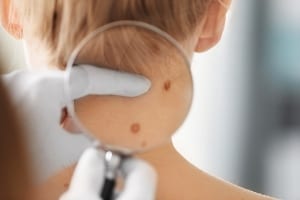 Different skin artifacts are part of our lives and bodies. There are different types of skin artifacts, some rare and some very common, but the common theme is one: they can be removed via surgical treatment by a plastic surgeon. The removal of moles and skin artifacts takes several minutes, doesn’t require long healing and recovery is usually very simple.
Different skin artifacts are part of our lives and bodies. There are different types of skin artifacts, some rare and some very common, but the common theme is one: they can be removed via surgical treatment by a plastic surgeon. The removal of moles and skin artifacts takes several minutes, doesn’t require long healing and recovery is usually very simple.
The plastic surgery experts at the Herzliya Medical Center hospital perform a variety of plastic surgeries every year, among them those that help to remove skin artifacts. These surgeries are done in various methods in order to ensure the intactness and health of the skin.
What should skin artifacts be removed?
There are 2 reasons to decide on the removal of moles and skin artifacts, where the first part is medical: moles and various skin artifacts might become cancerous at some point. The resection of artifacts, especially suspicious ones, would allow diagnosis and would prevent this process ahead of time and aid to significantly reduce the risk of the patient developing skin cancer.
Another reason is esthetic: many people want to remove skin artifacts to improve the overall appearance of their bodies. Large moles in the face, large spots in exposed areas, large warts or tags – all those hurt, for some people, their appearance and so they want to remove them through this procedure.
The removal of moles and skin artifacts doesn’t involve a complicated surgical action. In fact, this is one of the simplest procedures in plastic surgery and in general. Therefore, if in any other medical field the doctors would usually avoid performing surgeries that don’t have an immediate medical need, here it is different: the removal of moles and skin artifacts is sometimes recommended, even if the artifacts don’t hold a critical risk for the patient’s health.
In fact, the procedure is considered so simple that in many cases, a person coming for a consultation with a specialist for a certain artifact might get to remove it in that visit.
The difference between a benign and malignant artifact
As said, different skin artifacts (and mostly moles) could become cancerous with time and threaten the patient’s life. But, most skin artifacts are benign (for example beauty marks). If the artifact is suspected of being cancerous, a sample of it must be sent to a lab and the adjacent tissues must also be removed, to ensure the cancerous cells don’t spread to other parts of the body. Benign artifacts that aren’t suspected can also be removed, as said, for cosmetic purposes.
How is the removal of moles and skin artifacts performed in practice?
A dermatologist or plastic surgeon is the only one certified to perform this action. Today, there are several ways to remove skin artifacts:
- Surgical action
- Laser removal
- Electric needle removal
- Liquid oxygen
Any of those actions take about 20 minutes and are done under local anesthesia only, except for special cases. The patient is discharged immediately after the treatment.
It’s important to know that the surgical action is the only one allowing the removal of skin artifacts suspected of cancer, because only through it can the artifact’s identity be tested. The test is performed, as said, by taking a sample of the artifact and sending it to a pathologic test in a lab. All other actions, then, will only be done when the artifact is benign.
In the event, God forbid, that the artifact is found to be cancerous, there might be a need for another treatment of the area in which it was found, to try and track other cancerous cells in that area and remove them. Here, too, this isn’t a very long or complicated procedure.
After the removal of moles and skin artifacts
As said, the treatment for the removal of skin artifacts requires no more than a day of hospitalization. The patient could go home that day and even shortly after the treatment. Additionally, there’s no prevention from performing any routine activity, provided it isn’t performed on the area from which the artifact was removed.
For 10 days, it’s recommended to avoid exertion or sports activities and to protect the area from wetness and direct exposure to the sun. The laser treatment for the removal of skin artifacts doesn’t include stitches, unlike the surgical action, but the area is expected to be sensitive for several days and must be protected from harm.
Usually, a tiny scare would remain after the removal of moles and skin artifacts, but its size also depends on the size of the artifact removed. In any case, after several months, it’s expected to brighten and almost vanish, where its appearance largely depends on the skill of the treating doctor.
 Patients Log In
Patients Log In 










